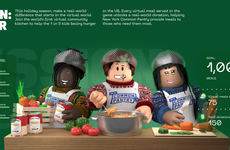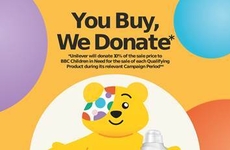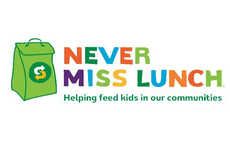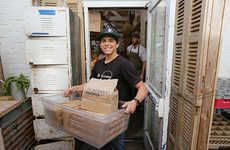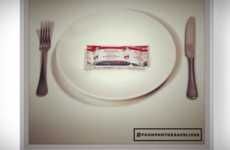
The 'Food Link' Campaign Let Users Carry Virtual Food Between Two Ads
Alexander Lam — June 18, 2013 — Marketing
In an effort to help empower first world citizens to make donations, the UN World Food Program commissioned the 'Food Link' campaign. Food Link allowed people waiting at a bus shelter to carry food to a hungry child with their smartphones. With just three steps, users could pick up virtual food from one bus shelter ad and bring it to the other.
Using RFID technology, the ads let your smartphone acquire pixelated food from a print ad. All you have to do is walk over to an opposing ad and drop the food off. After giving the child food, a video appears on your phone from the child in the ad. Your phone then gives you the option to donate and make the virtual food a reality.
Using RFID technology, the ads let your smartphone acquire pixelated food from a print ad. All you have to do is walk over to an opposing ad and drop the food off. After giving the child food, a video appears on your phone from the child in the ad. Your phone then gives you the option to donate and make the virtual food a reality.
Trend Themes
1. Virtual Giving - Using technology and creative advertising to facilitate virtual donations.
2. RFID Integration - Exploring the integration of RFID technology to enhance advertising initiatives.
3. Gamification for Good - Using gamification to encourage social good or improve social conditions.
Industry Implications
1. Advertising - This trend could inspire novel approaches to advertising or social campaigns by making use of technological innovations.
2. Charity/non-profit - This trend could inspire a shift in charity donation methods or non-profit campaigning strategies and lead to more effective fundraising.
3. Consumer Technology - Virtual giving and the integration of RFID technology may offer new features that could challenge existing business models for tech companies.
3.3
Score
Popularity
Activity
Freshness



